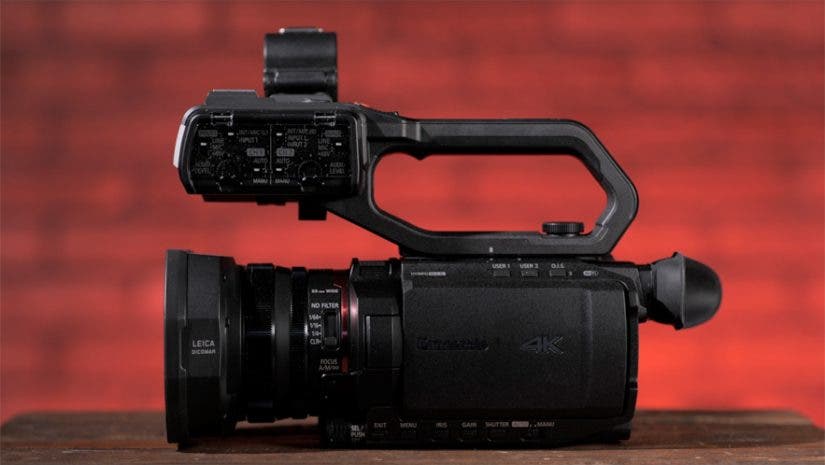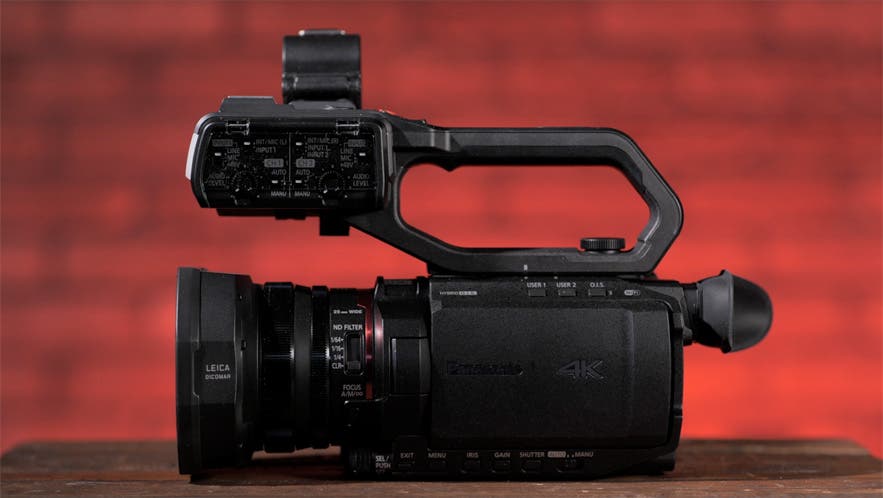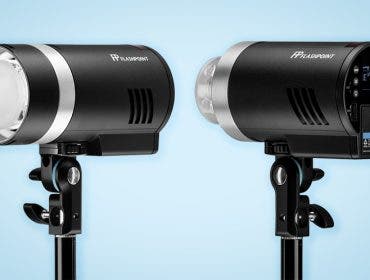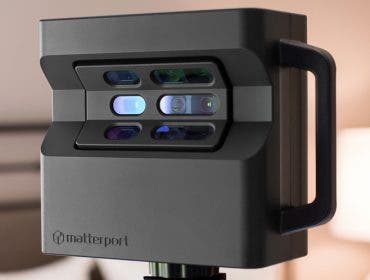I remember the release of the Panasonic AG-DVX100, back in the early 2000s. It was a compact prosumer camcorder that truly excited me. Now, in 2020, Panasonic has done it again. They’ve truly piqued my interest and, I think, raised the bar for this class of camera. You could say that the Panasonic AG-CX10 borders on full-out professional-class camcorder. I can honestly see this camera being used by vloggers and news-gatherers. And videographers for weddings, sports and action, documentaries and more. The list goes on and on. Let’s get into why.
The Panasonic AG-CX10 has a familiar build quality to similar camcorders but is feature-packed. Just like other camcorders at this price point, you’ve got built-in ND filters. You also get dual-programmable lens rings for focus and aperture or zoom. You’ve got XLR inputs on the top handle, a high-resolution EVF, flip-out LCD screen, multiple programmable user buttons, and it’s lightweight. In fact, Panasonic bills the Panasonic AG-CX10 as the lightest 4K 60p camcorder (with a fixed zoom lens) on the market. Now here are the features that set it apart:


Resolutions:
The CX-10 uses the Venus Engine which is usually associated with Lumix camera technology, and allows for faster image processing. You can get 10-bit 4:2:2 internal 4k recording at 30p up to 150Mbps and 10-bit 4:2:0 4k recording up to 200Mbps in 24p, 30p and 60p.
Shooting in FHD, enjoy 4:2:2 color up to 200Mpbs all the way 60p. These are very robust internal codecs for a camera of this type. There’s a choice of four recording modes. These are .MOV, .MP4, AVCHD, and Panasonic’s P2 .MXF. All offer a plethora of bitrate and frame rate options. You also have multiple choices of either Long GOP or ALL-I intraframe modes. In addition, there’s the ability to utilize the CX-10’s full-sized HDMI out to get uncompressed 10-bit video signals to an external recorder. Oh, and there’s super slow-motion recording in frame rates up to 120p in FHD.
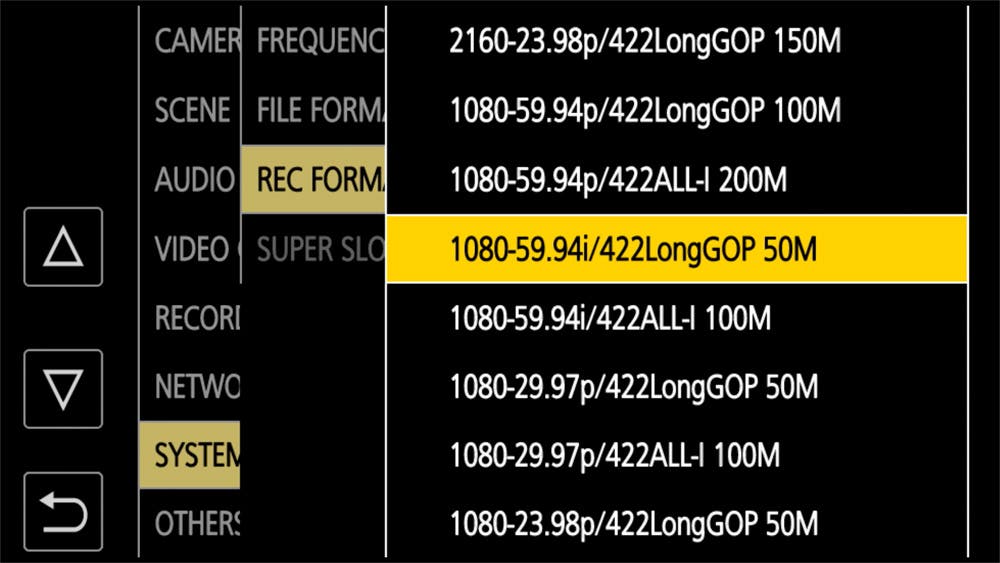
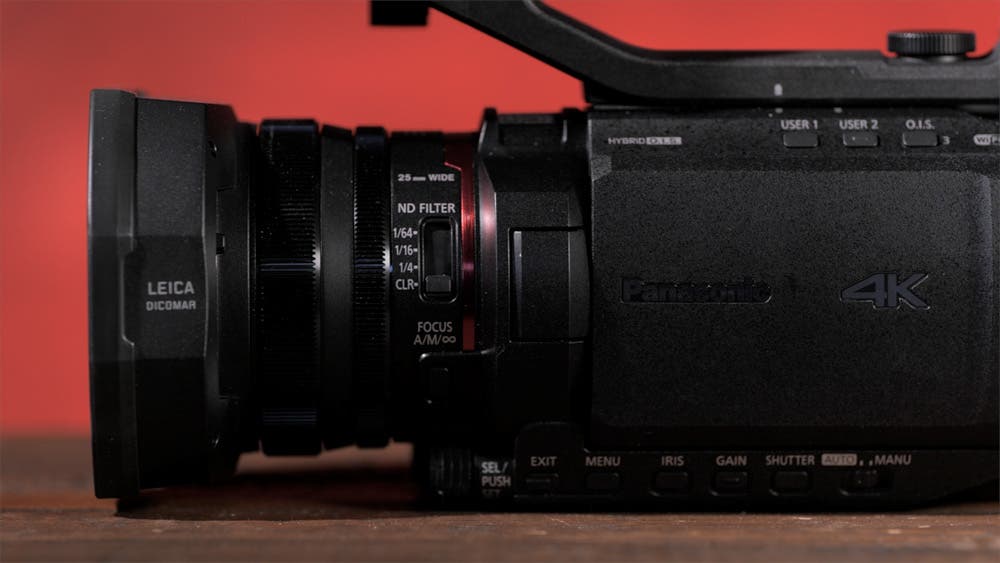
Zoom Lens:
The CX-10 has a 24x Leica Dicomar zoom lens that offers a 35mm equivalent of 25-600mm of optical zoom range. In iZoom digital zoom mode, you can get 32x clear magnification shooting in 4K and 48x in FHD. I found this lens to be extremely sharp and it offers vibrant color. The zoom is smooth and easily controllable with both zoom rockers on the main grip and top handle, which can be adjusted for a desired speed. It also has a built-in switch-activated lens cover.
Sensor:
Usually a camera around this price point contains a max 1-inch sensor but the CX-10 boasts a 1/2.5-type (inch) MOS sensor that is great at handling rolling distortion. Straight out of the box, this camera handled everything I threw at it and it performed respectably in low light and processed changing exposures in varying condition quickly and accurately. However, if you’re looking for dynamic range, don’t expect a sensor that matches a full-frame CMOS. Flatten out your picture profile for better falloff in your exposures.
Auto-Focus:
The CX-10 shines here big time. The face-tracking just works, really well. The AF/AE mode actually uses the color of the image to track focus, allowing it be far more accurate than what I’ve seen. Multiple modes of adjustment here, too.
There’s dual SD card slots — a must for today’s shooters — and you can have the flip-out LCD and the EVF operating at the same time. The EVF even extends out and flips up from the handle! The viewfinder is 0.61 cm (0.24-inch), but the quality of the image on the screen and data readout is very nice.
But here’s what blows me away about the CX-10:
Image Stabilization:
The on-board image stabilization in this camera is unreal. It’s so solid that I’m able to zoom all the way through the entire zoom range and hold my shot perfectly steady handheld, especially when using the flip-up EVF. There’s a hybrid technology in the CX-10 that uses a “Ball O.I.S” system to reduce friction on the drive section, the part of the system that allows for movement over the sensor. You just have to see it for your yourself or watch my video review on the CX-10 above. The O.I.S. is the shining, marquee feature of this camcorder and it makes me want to own one.
Streaming Encoder:
Amazingly, you can stream your video and audio directly from this camera straight to the web. This used to require a separate hardware device but now, more and more cameras are integrating this technology and it’s just what is needed for news-shooters, gamers, and online content creators. You can utilize the built-in Wi-Fi to stream directly to an RTMP and there’s also internal NDI technology to use the CX-10 in broadcast applications over networks that allow for external camera PTZ control. This is an amazing option that makes the low price point even more glamorous.
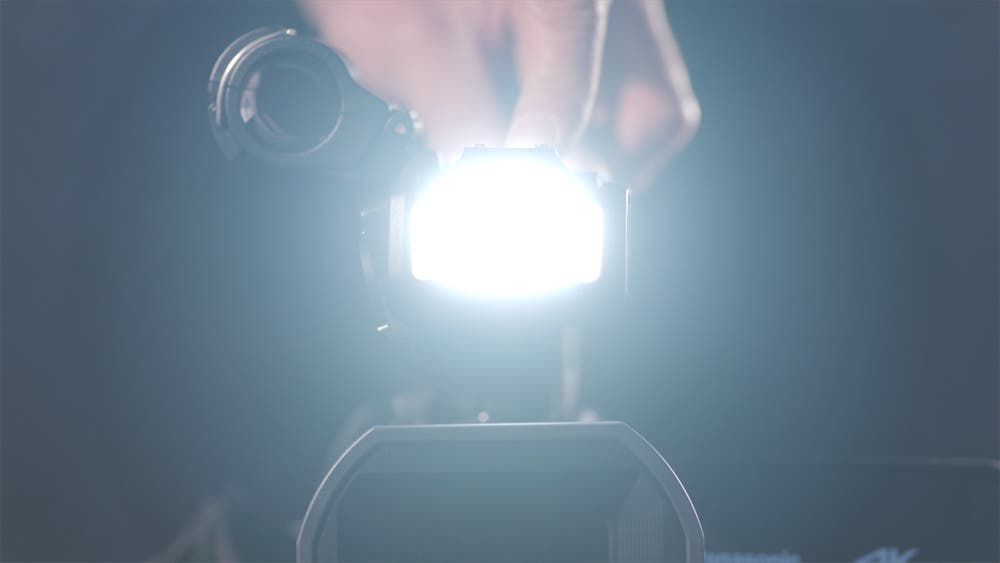
Built-in Light:
Not since the days of VHS camcorders have I seen a light built onto the camera body. The CX-10 has one and if you think about it, the timing for the return of this much overlooked feature is perfect and it makes the Panasonic AG-CX10 a vlogger’s dream. The 2”x1” daylight LED panel is built into the camera’s top handle and is adjustable with a small dial. It’s super bright but it definitely has enough kick to fill in shadows on subjects a few feet away from the lens. It’s actually genius and is another feature that sets the CX-10 apart from other cameras in its class.
There’s so much more to list about this camera but it a must-check for any serious video creator and a valid reason to look away from mirrorless cameras and give an integrated lens camcorder some serious consideration.
